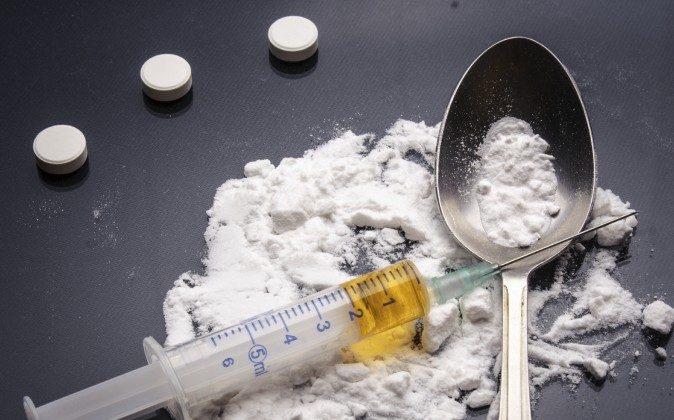There is only one certainty about drugs—if you don’t use them, you won’t get addicted. Everything else we know about how and why people develop problems with drugs remains uncertain or at least up for debate.
Forty years ago, the gateway theory of drugs emerged and is still widely quoted today. This hypothesis proposes there are a series of stages to drug use that start with legal “soft” drugs, such as alcohol and tobacco, which then lead on to the use of an illicit drug, typically cannabis.
Many people experiment with drugs such as tobacco, alcohol, and cannabis during their adolescent years. For some, buying cannabis from a dealer who supplies other drugs can be an access point that might lead them on to using other drugs, such as heroin. In that sense, cannabis use could be viewed as a gateway to other drugs.
But the gateway theory starts to look flimsy when you consider the fact that not everyone who uses cannabis goes on to use heroin.
The Prescription Gateway
Although not new, an often overlooked gateway or route into illegal use of drugs is the one instigated by prescription medicine.
For example, opiates are prescribed to manage pain. After being introduced to opiates in this way by their doctor, many people go on consuming opiates after their initial pain has subsided. But instead of accessing opiates via their prescribers they enter a shadow world of diverted opiate medication, often made available through family or friendship networks.
So while initially opiate use is legitimate, it can act as the first step towards securing and using drugs illegally and possibly could be a gateway again to other drugs.
In America, for example, the sharp increase in drug overdose deaths has focused attention on the number of people misusing prescribed opiates. Irrespective of how it is sourced, the number of Americans consuming opiates is reaching epidemic levels. How we prescribe these drugs needs further investigation.
Nature via Nurture
But there are also other explanations of how problematic drug use can develop. Teenagers who combine legal and illegal drugs are at greater risk of developing problems, for example. Additionally, a blend of nature and nurture leads these people to use multiple drugs. If the critical ingredients of environment, genes, and the number of drugs that you start using merge, this can increase the risk of problematic substance use.
So it is not simply a specific drug that acts as a gateway to other drugs; individual vulnerability is the key factor. Several elements can produce this vulnerability. Poverty, trauma, and mental health problems can all increase the risk of problematic drug use. But the single biggest factor that impacts the greatest number of people is drug policy itself.
Policy as a Gateway
The government’s main responsibility is to protect the population it serves. The current U.K. administration believes it achieves this by restricting the supply of drugs, with an increasing tendency to ratchet up drug control. In April, for example, the U.K. will ban all psychoactive drugs apart from caffeine, nicotine, and alcohol.
For many, this approach to policy has proved to be an effective gateway into a career of crime, with an increasing number of—particularly young—people introduced to the criminal justice system for minor drug possession offences. The sanctions applied restrict their employment opportunities, alienate them, and reduce their ability to achieve their potential. Consequently, many sink deeper into crime, turn to drugs—or both. Rather than protect people, this policy approach has created unnecessary harm.
The new policy on drugs is a refresh of the old one according to the Home Office. More of the same is not good enough. We need a more radical approach that takes a more rounded view of the harms that drugs can cause. Matched by a policy response that is more sophisticated than the current blunt and ineffective legislation. A useful example of an alternative approach is provided by The Liberal Democrats. They convened a group of experts to examine how cannabis could be regulated in the U.K.
In some countries, such as the United States, more people die as a result of drug use than in road traffic accidents. If these thousands of drug deaths were viewed as car crash fatalities we would support investment in preventative measures, but not all deaths are equal.
So while we can carry on debating causality theories in academia, it is nothing more than a distraction from the tragedy that is unfolding day-to-day for those who use drugs. When it comes to drug policy, the state is not protecting the people it serves. Current policy fails every part of society. It’s time for the government to act ahead of popular opinion and introduce evidence-informed drug policy. A great many lives depend on it.
Ian Hamilton is a lecturer in mental health at the University of York in the U.K. This article was originally published on The Conversation.

